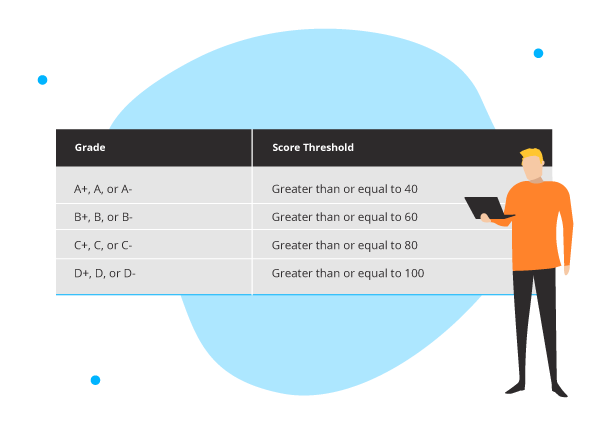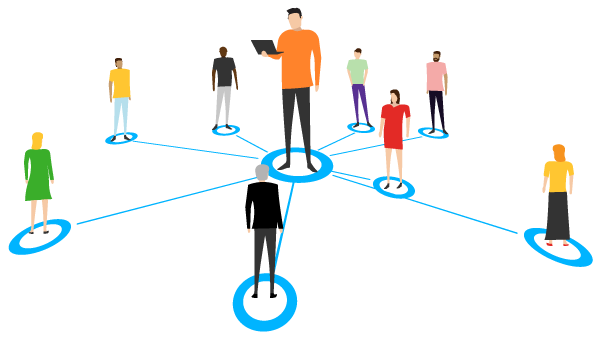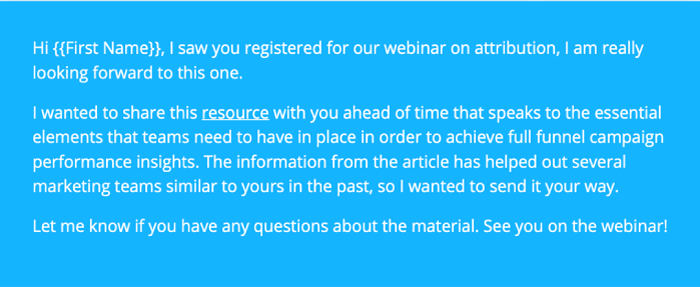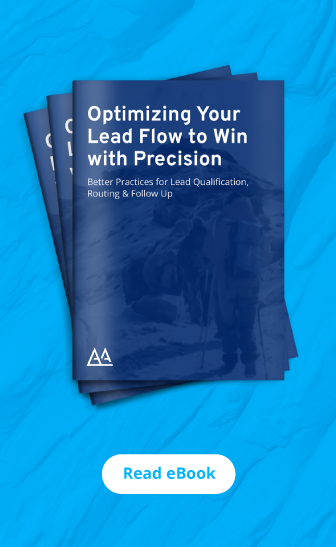When a lead has reached its Marketing Qualified Lead (MQL) threshold or has raised their hand saying that they want to talk to sales, what happens next is critical. Your lead routing process needs to be optimized to get the right leads in front of the right people at the right time, or else follow up could be stalled resulting in a poor experience for the prospect and potentially a missed deal for the business.
Leads that are responded to within 5 minutes or less are 100x more likely to convert to an opportunity (Chili Piper). If your sales team is not following up within 5 minutes, that probably means your competition is and your chances of winning the prospect’s business has now significantly decreased.
Therefore your lead distribution structure needs to be built in a way that works for your current sales organization, prioritizes your team’s time, fosters a fast follow up, and is scalable to build upon as your team grows. We explore how to go about this in our eBook, Optimizing Your Lead Flow to Win with Precision, but have included an overview here to get your started.
Considerations for Your Lead Routing Process
The first step is to consider the makeup of your sales team, how you might handle ramp time with new salespeople that join, and how you want to handle different types of inbound leads. Ask yourself the following questions:
How is your sales team organized?
-
- By territory?
- By vertical?
- By company size?
Do you have Business Development Reps (BDR’s) or Sales Development Reps (SDR’s) that need to be a part of the routing process as well?
Do you have pre-identified target accounts that have already been assigned to certain Account Executives (AE’s)?
How are you currently factoring in lead assignment when a new sales team member starts?
-
- Are you throttling leads to give them time to ramp?
How are leads currently being assigned?
-
- Is it a round robin rotation?
- Is a sales manager manually assigning leads based on seniority and ramp time?
- Is there an automated lead assignment rule set up in the CRM?
- Is there an automated flow that is assigning leads based on the criteria that segments your sales team, such as territory or vertical?
Your lead routing process should be reflective of how your sales team is organized. If you have a BDR & SDR team, then deciding ahead of time the leads that will be routed to them versus your AE’s can help streamline the process and be a more seamless experience for the prospect.
Routing with BDR’s / SDR’s & AE’s
You may only want your AE’s to focus on certain types of leads, such as handraisers that have a certain level of fit with your Ideal Customer Profile (ICP) and leads that are associated with their already pre-assigned target accounts. Your BDR’s and SDR’s may then receive all other leads such as your lower level fit handraisers and your nurture leads for further vetting.
Handraisers are prospects that take an action to say that they want to connect with someone from your sales team (fig. 1). For example, they may have submitted to your contact us form or your product demo request form. Nurture Leads are any leads that have engaged with your marketing campaigns enough and have enough of a level of fit with your ICP to have reached the agreed upon Marketing Qualified Lead (MQL) threshold to have been sent over to sales (fig. 2).


Figure 2, Examples of Marketing Qualified Lead Thresholds
The grade refers to the level of fit that your lead matches with your ICP. Your AE’s might focus on the leads that are at an A- grade and above, while your BDR’s / SDR’s might focus on the leads that might be at a B+ and below.
It really depends on the sales team that you have in place and where you want their focus to be. The main takeaway to remember is that you want to plan this ahead of time and map everything out first, so that your systems can be configured to route automatically, helping your prospects to get in front of the right salesperson as fast and efficiently as possible.
Routing with Target Accounts
If you are doing an account based approach and have pre-identified target accounts that are already assigned to your AE’s then instead of having these leads round robin among your team, have these leads go straight to the AE that is the owner of the target account in your CRM, whether the lead is a handraiser or a nurture lead. The reason being is that these have already been identified as pre-qualified, because they are associated with target accounts that have already been confirmed to match your ICP.
Target accounts should always get the white glove treatment and their account owners should be giving them their full attention when they engage, so the faster these leads are routed to their account owner, the better!
Routing with Sales Segments
Your sales team could be segmented to cover certain industries, territories, or company sizes. If this is the case, the accuracy of your lead data is absolutely critical.
A challenge that can kill a lead routing process is inaccurate and incomplete data. If marketing has already had the alignment conversation with sales, they should be configuring this criteria into their lead qualification process with their marketing forms and chatbots. They can use this in conjunction with a data enrichment tool that integrates with your CRM and Marketing Automation Platform (MAP). Data enrichment can help keep your data up-to-date, while also enriching fields with missing information.

Once you have the structure in place to make sure that you will have the data you need on inbound prospects to properly route them, the other consideration to make is how the lead will be distributed within these segments. Will you use a round robin assignment within each territory division? Will new salespeople joining be a part of the round robin or will you use throttling to factor in ramp time?
Having accurate lead data plus already deciding how you will route leads within those sales segments are both essential for an optimized lead distribution structure.
Lead Routing that Scales
If your sales leader is manually routing leads or you are the sales leader doing this currently, know that this will only be feasible for a season, which is when you have a small number of inbound leads and/or you have a small sales team. The moment your inbound leads increase and/or your sales team grows, manual routing will no longer be an effective solution. It will only delay the routing process and will result in more time that the prospect is having to wait to hear from your sales team.
The SaaScend team encounters sales leaders doing manual routing more often than you would think and we always advise to progress towards an automated approach, because the benefits result in an increase in conversion rates, studies have shown by 87%. The sales leader’s time is precious and they need to be empowered to focus on higher impact efforts such as coaching their team. An automated process frees up their time to make this happen.
Once you have your lead routing process mapped out, work with your sales and revenue operations teams to automate this, so that your funnel is no longer stalled by manual distribution.
Follow Up that Increases Conversion Rates
Leads getting routed to your sales team properly can increase conversion rates per the referenced earlier statistic however, the lead getting routed to the right person is half the battle, what comes next with how sales follows up will determine whether or not the lead actually converts.
The below techniques are proven best practices that your team can implement to support effective lead follow up to get more meetings booked and more deals in the pipeline.
#1
Using Automation to Follow Up
Sales cannot follow up manually with every lead that is sent over to them, but there are exceptions such as for target accounts or top tier leads that are routed straight to your AE’s. Automation can be used to help streamline the follow up process, so that your prospect receives communication from your sales team in a timely manner.
#2
Inbound Conversion Platforms & Scheduling Applications
As the goal of your sales team’s follow up is to get a meeting booked with the prospect, a solution that your team can implement is a scheduling application such as Chili Piper. You can use their solution with your Bottom of Funnel forms, such as your contact us form and your product demo form, so that the prospect can book time on the appropriate sales team member’s calendar upon form submission. Your team can also implement configurations where the platform evaluates the level of quality of the lead before allowing the prospect to book time, so that only your best leads are being sent to sales at the moment they submit to a Bottom of Funnel form.
This allows your high quality leads that are raising their hands to not have to wait to book time and eliminates the need for back and forth follow up. The salesperson’s follow up can be automated, but instead it could be letting the prospect know that they are looking forward to the meeting and then sharing a relevant piece of content that aligns with the prospect’s inquiry and interests.
#3
Nurture Sequences
60% of leads will say no four times before saying yes (invesp). Which means that if your sales team is not following up five times, they could be missing out on an opportunity with 60% of your leads.
Nurture sequences used with sales engagement platforms such as Outreach, SalesLoft, or Groove, allow for automated follow up to happen over a period of time, so that your sales team can continue to focus their time on leads that are engaging and are ready to move forward. At the same time the sales engagement sequence is doing work for them in the background to follow up five times or more with prospects that may be slower to engage, so that the salesperson can get more conversions.
#4
White Glove for Target Accounts
As mentioned earlier, target accounts deserve the white glove treatment, meaning special attention to personalization. If your marketing automation platform’s campaigns are synced with your CRM, your sales team should be able to see what campaigns each contact from their target account has engaged with, helping to allude to the topics or challenges that they might be facing or the most interested in.
The salesperson can then use this intel in their follow up to speak to and share relevant content that aligns to the assets and campaigns that the prospect has been interacting with, similar to the follow up email example in Figure 3. This salesperson is reaching out to a contact at a target account after they have registered for a webinar to start building a relationship with them. To do so, they offer additional content that aligns with the campaign they have registered for.

Figure 3, Lead Follow Up Example
#5
Content Library for Sales
To help streamline follow up, sales needs to be able to have access to the relevant content for their prospect in one central location. A place where they spend the majority of their time in their flow of work. Therefore, marketing can use a central repository of resources for the sales team including their enablement content such as case studies and one pagers, in addition to educational content such as their guides and eBooks.
If your sales team uses a Digital Deal Room platform such as Enableus, DealHub, or GetAccept, your marketing team can upload the relevant sales content to the library, so that as sales is building their deal room, they can quickly add new assets and easily locate the content they need, to keep their follow up relevant and personalized while not having to switch to another platform.
Overall, to build out your lead routing process so that it scales and fosters an increase in conversion, you need to first map out how your sales team is organized, how you will handle target accounts, handraisers, and nurture leads, and then decide how you will automate it. Once all of this has been discussed, defined, and configured, then optimizing your lead routing process comes from tracking its level of speed, efficiency, and accuracy to make incremental improvements.
Lead Routing Masterclass



